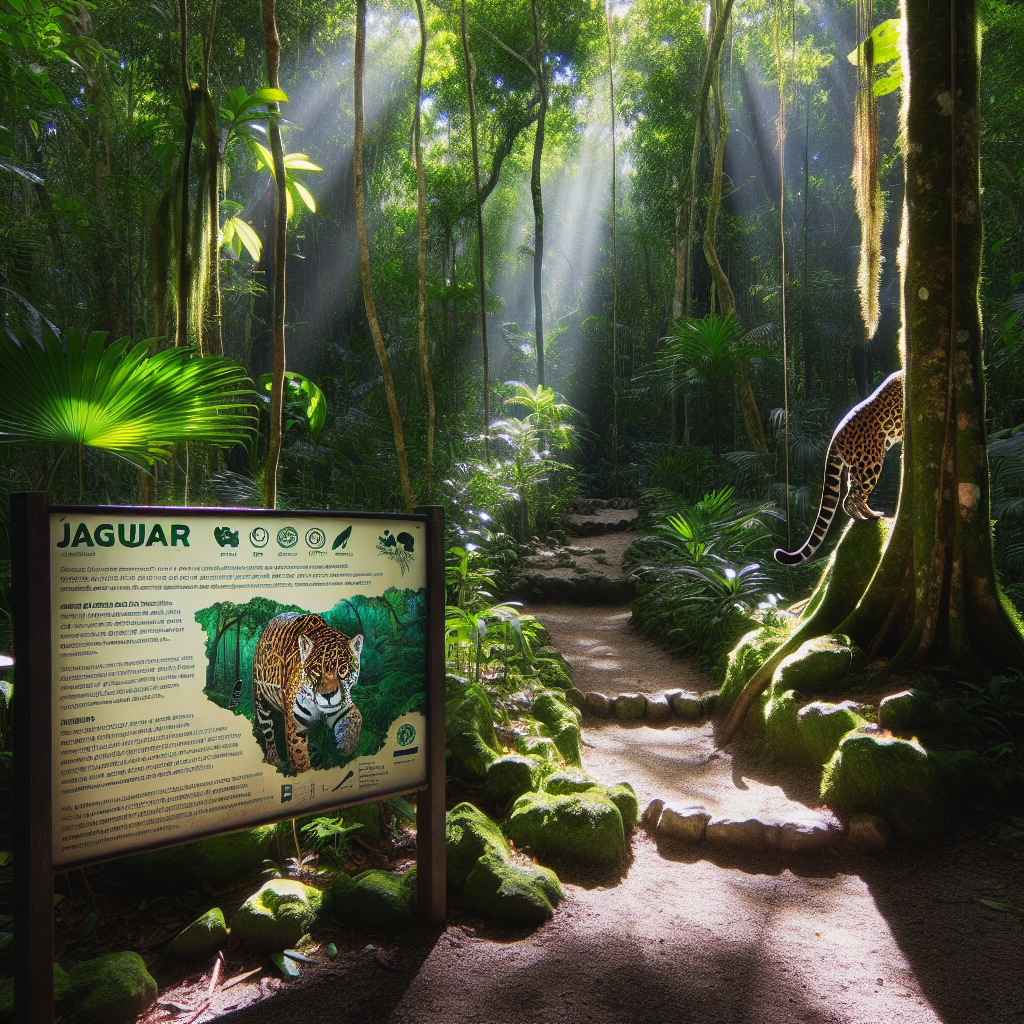Eco-Education: Tulum’s Initiative to Save the Jaguar
The Significance of Jaguars in Ecosystems
Jaguars (Panthera onca) are apex predators and play a critical role in maintaining the health of the ecosystems they inhabit. As keystone species, their presence helps control the populations of other species, ensuring a balanced food web. In Tulum, Mexico—part of the Yucatán Peninsula—a rich tapestry of biodiversity thrives. Unfortunately, habitat loss, poaching, and climate change pose severe threats to these majestic cats.
The Decline of Jaguar Populations
Over the years, jaguar populations have dramatically declined due to deforestation, illegal hunting, and land conversion for agriculture and development. The International Union for Conservation of Nature (IUCN) lists the jaguar as near threatened, which stresses the urgency of concerted conservation efforts in areas like Tulum.
Tulum’s Unique Environment
Tulum, known for its stunning beaches and ancient Mayan ruins, features rainforests, mangroves, and coastal ecosystems. These environments are crucial for jaguars as they provide habitat, prey, and breeding grounds. The region is home to a variety of species, including deer, tapirs, and peccaries, which serve as primary food sources for jaguars.
The Role of Eco-Education
Eco-education serves as a foundational initiative to promote awareness and action surrounding jaguar conservation. By educating the local communities about the importance of jaguars and the environmental threats they face, initiatives in Tulum aim to foster a culture of conservation.
Community Involvement
Local communities are essential in the battle against jaguar decline. Programs are being developed that encourage residents to participate in conservation efforts actively. These include workshops, community forums, and collaborative projects that holistically involve locals in the protection of their natural heritage. Villagers are trained to become wildlife rangers, monitoring jaguar activity and reporting illegal poaching.
Partnerships with NGOs
Various non-governmental organizations (NGOs) have teamed up with Tulum’s local authorities to enhance eco-education efforts. For example, organizations like Panthera work to safeguard big cats globally. They offer expertise, resources, and funding to support community-led conservation projects.
Educational Programs for Youth
Schools in Tulum have integrated environmental education into their curriculums. Children learn not only about jaguars but also about the interconnectedness of ecosystems. Field trips to local nature reserves offer practical experiences, enabling students to observe wildlife in their natural habitat. This exposure instills a sense of responsibility toward nature from an early age.
Workshops on Sustainable Practices
Sustainability workshops that focus on eco-friendly farming and tourism practices are also vital. These workshops provide training on methods that minimize habitat destruction while encouraging economic development. The agricultural sector, in particular, is educated on organic farming methods that are less harmful to jaguar habitats.
Ecotourism as a Conservation Tool
Ecotourism in Tulum has become a lucrative avenue for conservation funding. Many businesses are dedicated to sustainable practices, offering tourists opportunities to learn about the local flora and fauna, including the jaguar. As visitors participate in eco-friendly tours, they contribute to local economies and support conservation projects.
Increased Awareness Through Social Media
Social media platforms play a crucial role in raising awareness about jaguar conservation in Tulum. Campaigns that feature stunning visuals of the species and their habitats reach global audiences. Hashtags such as #SaveTheJaguar and #TulumConservation draw attention to local efforts and encourage support from a broader audience.
Establishing Protected Areas
Efforts are underway to establish protected areas that serve as prime habitats for jaguars. These reserves will restrict development and human activity that could threaten their survival. Protected areas such as zoos and eco-parks will also provide safe havens for jaguars and educate visitors about their significance.
Research and Monitoring
Understanding jaguar behavior and habitat use is critical for effective conservation. In Tulum, researchers employ camera traps and GPS collars to monitor population dynamics and movements. These scientific studies help in forming evidence-based conservation strategies tailored to the unique challenges faced by Tulum’s jaguar population.
The Importance of Genetic Diversity
Maintaining genetic diversity is crucial for the long-term survival of jaguars in Tulum. Conservation initiatives address this by creating wildlife corridors that connect fragmented habitats, allowing for migration and gene flow between populations. This strategy enhances resilience against diseases and environmental changes.
Government Support and Legislation
Legislation plays a key role in jaguar conservation. Local and national governments have introduced regulations aimed at protecting wildlife. Efforts include the enforcement of anti-poaching laws and the regulation of land use across jaguar habitat ranges. Community awareness campaigns are also promoted to ensure compliance with these measures.
Collaborating with Indigenous Communities
Indigenous communities possess invaluable traditional ecological knowledge. Collaborating with these groups enhances conservation effectiveness by incorporating their practices and understanding of the land. Tulum’s initiatives work closely with Indigenous groups to ensure cultural aspects are respected while advocating for wildlife protection.
Engaging the Local Economy
Alternative income sources for local communities are essential in reducing reliance on activities that harm jaguar habitats. Training in handicrafts, sustainable agriculture, and guided tours provides income opportunities while promoting jaguar conservation awareness. Community-led and locally produced products can often attract environmentally-conscious travelers.
Cultural Significance of Jaguars
Jaguars hold a cultural significance in Mesoamerican history and mythology, regarded as symbols of strength and power. Engaging local communities through cultural storytelling and symbolic art campaigns can garner respect and motivation to protect this endangered species. Traditional narratives can inspire a deeper connection to jaguars and encourage proactive conservation efforts.
Future Directions for Tulum’s Conservation Efforts
As the initiative to save the jaguar continues to gain momentum, future efforts will likely focus on expanding educational outreach, enhancing partnerships with local stakeholders, and securing more funding for research and conservation projects. Advocacy for stronger environmental policies at regional and global levels will also be crucial.
Conclusion
The ecological education initiative in Tulum focuses on jaguar conservation, uniting scientific research, community action, and sustainable practices in a collaborative effort. By equipping local communities with knowledge and resources, Tulum aspires to create a legacy of ecological stewardship that protects not only the jaguar but the rich biodiversity of the region for generations to come.







